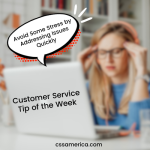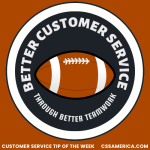
Many of our healthcare clients are adopting the concept of creating an “Always Culture.” This movement is often in response to a change in Federal Government reimbursement to hospitals that is based in part on the results of patient satisfaction surveys. Those surveys are structured to have patients evaluate whether staff, nurses, and physicians “Always” do certain activities (as opposed to “Usually, Sometimes, or Never”). To maximize reimbursement, the healthcare organization wants a high percentage of their patients answering “Always.”
Now the concept of the “Always Culture” has been around for years, in and out of healthcare. The way we’ve described it is that you don’t want customer service to be a light switch (where you turn it on with clients and turn it off with co-workers); instead, it needs to be an all-the-time thing.
But regardless of what industries use the phrase, it’s still a meaningful concept.
The idea of “Always” implies that we’re CONSISTENT (hopefully Consistent Excellent) across departments, shifts, product lines, and people. That consistency requires that the organization hires those individuals with the propensity to be customer service-oriented, sets expectations of what is a great customer experience, trains ALL staff on the key principles and techniques, monitors performance in ALL areas, and rewards not only the “WOW” but also the Consistent Excellence. It requires that we hold those accountable that keep us from Consistent Excellence, and that we have leaders that understand that they must model the practices they expect of others.
Organizations striving for the Always Culture must continuously communicate the expectations, the goals, and the performance – celebrating success whenever possible.
But – in the end – “Always” comes down to the individual. Is it a habit to serve, a habit to care, a habit to be inquisitive, and a habit to be empathetic? Is it a habit to be responsive, a habit to proactively communicate, a habit to quickly resolve issues, and a habit to appreciate others?
Create your own “Always Culture.” Make excellence a habit.























